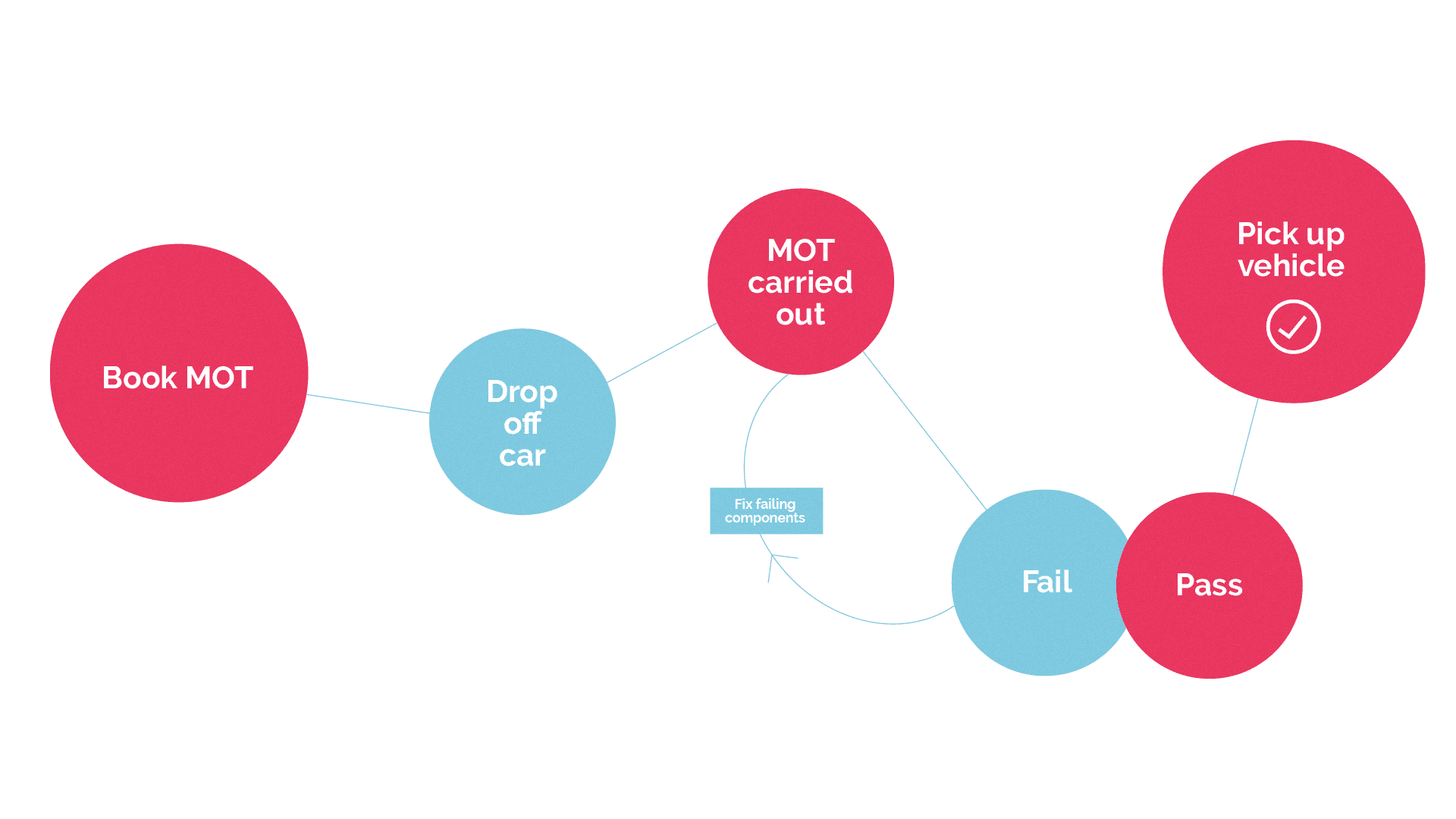Their best course of action would be to create a Customer Journey Map. By assessing the touchpoints which could be causing aggravation to customers, the organisation can make the necessary changes to create a smoother MOT experience and loyalty. The Customer Journey Map served the purpose for this scenario of finding out the pain points of MOT customers, however, it doesn’t really benefit the wider organisation outside of this single transaction.

Now take this situation, a member-only Golf Club is experiencing a decline in overall membership, but the rate of new members joining has stayed the same, which is pointing to there being member disengagement at some point in their membership journey. The Golf Club is unsure at what stage existing members are leaving and what is triggering them to do so. They decide to use a Customer Experience Map to evaluate the entire member experience, which provides them with a deep, wide-ranging, insight into all their members' touchpoints and informs a myriad of changes that can be made to completely revamp their membership process and communications, and therefore maintain member loyalty.

Experience mapping and journey mapping can seem confusingly similar, and there are certainly elements in both that overlap. But there are a few very key differences to be noted when deciding if a journey OR experience map will best serve the needs of your organisation. Simply put, a customer experience map is a total visualisation of the big picture, taking everything into account that can impact a customer’s experience. A customer journey map, however, is more targeted, focused on one particular area of the organisation, or a specific transaction, and an individual customer persona.
A customer experience map is a total visualisation of the big picture, taking everything into account that can impact a customer’s experience.
Customer Journey Mapping
What is it?
Customer Journey Mapping is the visualisation of the process a customer goes through in order to get from the first stage of the buying cycle, all the way to post-purchase. The goal of the map is to determine all the potential pain points or issues that customer may be encountering. The outcome of this exercise is typically a linear diagram demonstrating the various stages a customer moves through, and the subsequent emotions they feel as they go through these stages of interaction with the company.
What can it inform?
One key feature of a customer journey map is that it can show you the exact path a customer took to get to your product, including which messages they received that were useful, and on what channels, which can no doubt be used to inform future marketing decisions. Another benefit, if not the main benefit, of a customer journey map is that you end up with a complete breakdown of how customers move through the sales funnel for a particular product/service, providing a valuable insight into where inefficiencies lie within each stage of the buying cycle. This allows the company to make small changes and tweaks, based on real evidence, and maximise the efficiency of each of these stages that the customer travels through.
When is it best used?
Customer journey mapping can be used anytime you want to put yourself in a customer’s shoes, whenever you want to know what they experience when interacting with your company or product. These are generally best used when you have a specific goal in mind, or a specific issue that you are aware of that needs to be solved. Journey maps are used when you want to zero in on a specific type of customer or persona and get a better understanding of one particular element of your business. Put simply, a customer journey map is best used if you know where you want to focus; you know where the problem lies, you just need to find out how to solve it.
In contrast to journey mapping, a customer experience map is best used if you don’t know exactly where the problem lies.
Customer Experience Mapping
What is it?
A Customer Experience Map is a holistic, all-encompassing visualisation of an experience, from beginning to end, that a customer will go through irrespective of a specific product/department. These maps are more concerned with human behaviour in general; discovering more about the thoughts and experiences of a customer at every stage in the buying cycle. This is a deeper analysis than just a journey map, it could include a journey map within it, but it also takes into account experiences a customer may have outside of the journey with one particular product.
When is it best used?
In contrast to journey mapping, a customer experience map is best used if you don’t know exactly where the problem lies. You know something, somewhere is falling short, and by approaching the exercise in an honest and open-minded manner, you can hopefully nail down exactly where the customer pain points are, when before, you might not have known they existed at all. One key thing to be mindful of is that this is a customer experience map, meaning it’s got to be from their perspective, not yours or your business’s. One common pitfall to avoid is mapping out what you think the experience should be, when really, you want to map out what the experience actually is in the customer’s eyes, warts and all.
What insights are you likely to get?
- How you can optimise touchpoints with your brand
- Pain points or moments of truth in interactions with customers
- Details of website journeys
- Potential eCRM strategies
- Long term digital roadmap development
- Insights when campaign planning
- Implementation of marketing automation
Always keep in mind that this is not the same as a simple journey map, there is not necessarily only one destination.
One final thing to remember is although these maps may look like a piece of art, they are not meant to be permanent fixtures on the wall, they should be regularly reevaluated and updated. If you aren't going to rework the map at a later date to measure your progress, it’s probably better not to bother creating one in the first place.
If you want to learn more about how to make the most of these maps read our step by step guide here




